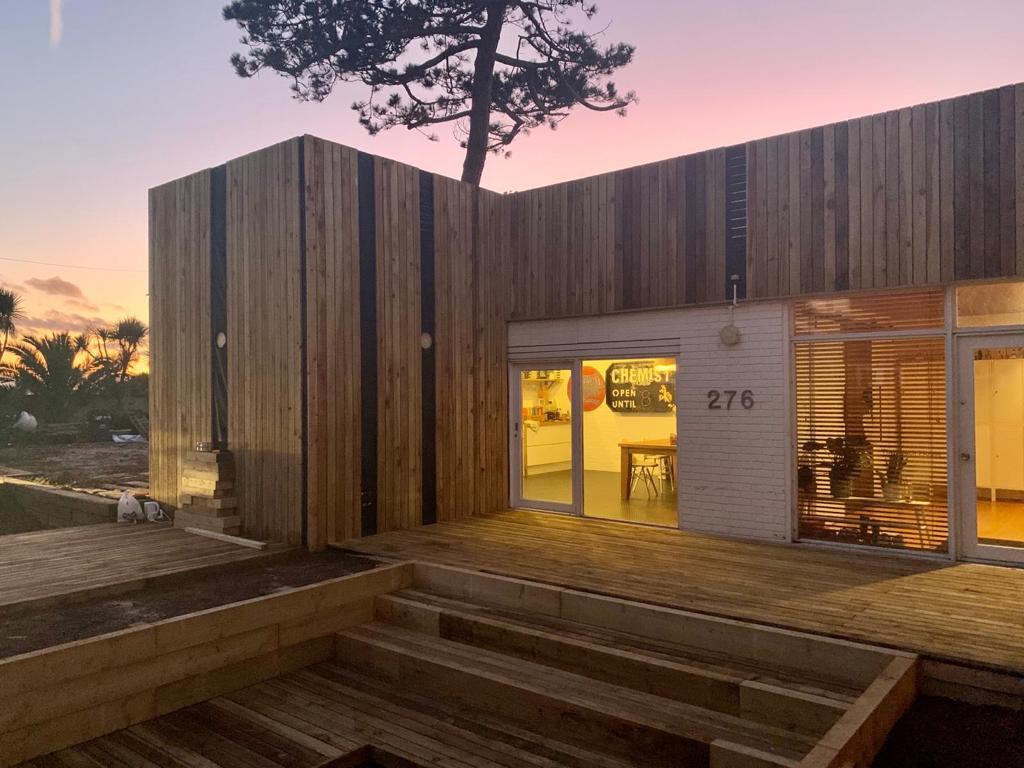Timber Work:
Timber is a common material in many gardens we create and not just for structures such as outbuildings and pergolas. Sleepers are widely used in our designs in order to add raised flower beds, vegetable patches, retaining walls and steps.
Sleepers can bring a sense of personality to your project. No two sleepers are the same, with knots, cracks and colour variations they have the benefit of naturally softening the appearance of a garden. They also work very well when matched with paving and used instead of brickwork.
Decking:
Traditionally, decking has been the use of a timber frame and either hardwood such as Balau or softwood to clad structure.
Recently we have seen more and more options to the market in the way of composite decking options. Essentially, composite decking is made of plastic with wood fibres added and has the advantage of a much greater life span. However, as you would expect these options do come with a cost attached. Many colours are now available ranging from natural colours with a wood effect grain added to greys, blues and blacks that are aimed at the more modern styled consumer.
Fencing:
There are two main types of fencing panel available. Closeboard and Laplarch panels are the most common. The main difference is the timber slats on a closeboard panel run vertically. A laplarch panel runs horizontally and also tend to be a little cheaper per panel.
Your choice of supplier will dictate the quality. We use a local company based near Stansted House in Rowlands Castle which offer a high quality product but at a competitive price. However, as with all building and home improvement materials, there are very high specification products available that we are also able to use should you want something extra special.
There is also two main products available to support your new fencing. The posts and ‘kick’ or ‘gravel’ boards are typically made from either concrete or timber. The choice between these comes down to a few things. The concrete will last forever but are a little more expensive. But really it’s personal preference on the overall look. Some people prefer the all timber and some the contrast with the added peace of mind that they’ll get a few more years out of their new fence.

Frequently asked questions:
What types of sleepers are there?
The three mainstream sleeper types are softwood, oak and reclaimed railway. The softwood are the cheapest but still a good product and pressure treated with a chemical to increase the longevity. Oak and reclaimed are both a hardwood so naturally the life span of these are longer and are a little more expensive. The price difference isn’t huge, therefore, if you budget allows, we would always recommend a hardwood sleepers due to the time allowed until these would need replacing.
How long will my timber sleepers or fence posts last?
At Balfour Landscapes, we also line the inside of our sleeper beds, planters or fence posts with a damp proof membrane to stop the wet soil constantly penetrating through the timber and rotting it out. As a rule of thumb, you should expect to get around 10 years for a softwood and up to 20 for a hardwood obviously depending on the position of your garden and how much sunlight it gets through the year.
Should I just get my planters or retaining wall built using brickwork instead of sleepers then?
This is a personally decision. Brickwork, if built correctly will last for generations. Although building a brick planter for example is a lot more labour intensive than a sleeper version. If you imagine approximately 50 bricks would meet the same coverage as a sleeper. Therefore the time and materials required to lay the bricks vs the sleeper would be Significantly more.